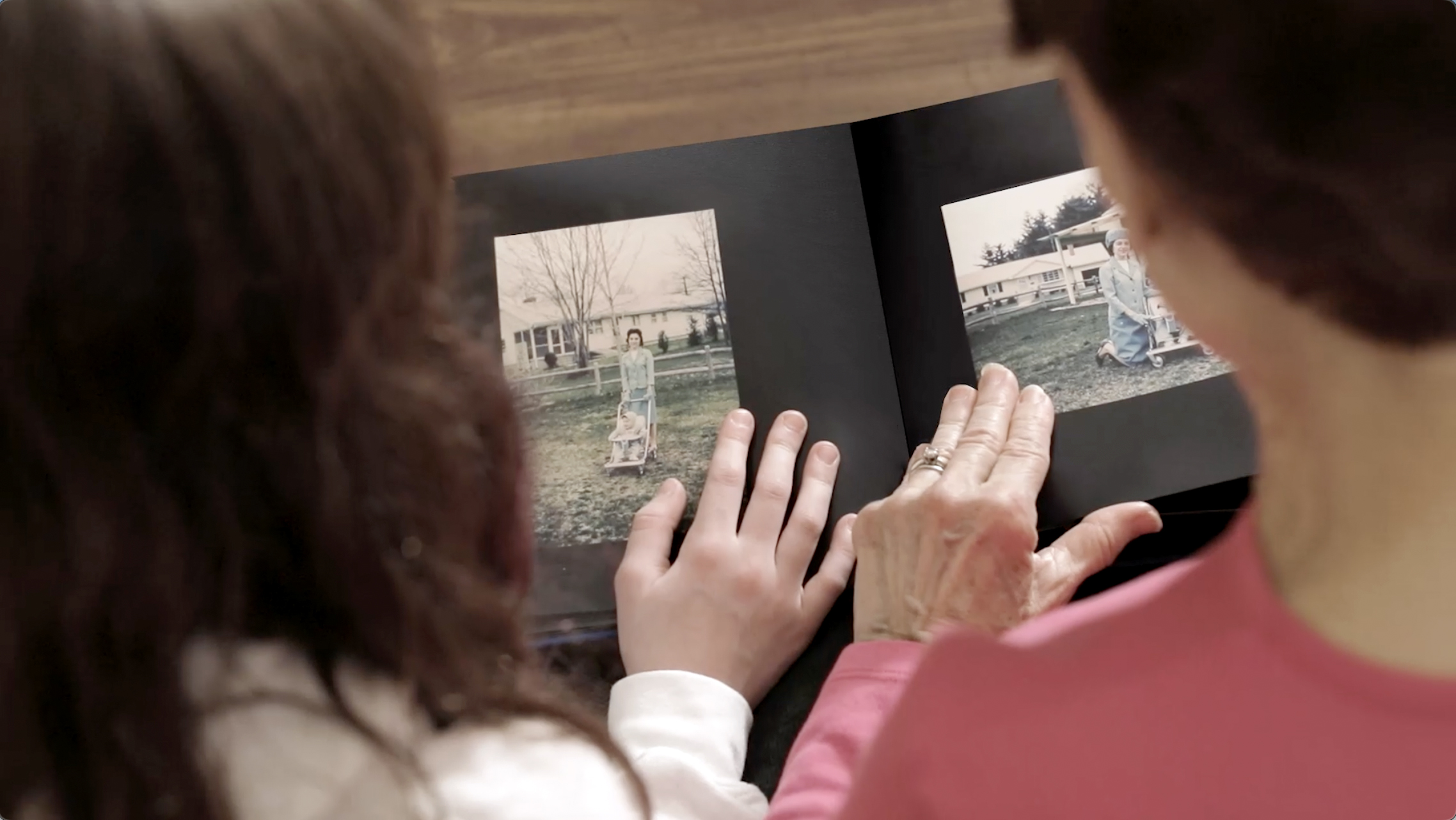3 Tested Ways Dementia Patients Benefit from Photo Reminiscence Therapy

Josh Freitas, PhD. and his colleagues published a research study on the benefits of photo reminiscence therapy. They focused on residents in memory care unit settings.
After the study on photo reminiscence therapy, Freitas concluded:
… the power of engaging with personal photos, matched with a high-quality care curriculum and living environment, may improve the quality of life for those with dementia by stimulating the brain and fostering neurogenesis and neuroplasticity. This may improve quality of life and, sometimes, temporarily diminish dementia symptoms during therapeutic sessions.
As we know, looking at old family photos and talking about them is good for the psyche and overall wellbeing. Photo reminiscence in action!
Last month, my 91-year-old mother-in-law was admitted to a senior care facility. She suffers from dementia, and although she had been aging in place, the family agreed it was time to put her in the care of well-qualified professionals. She has adapted to her new home well.
Creating photo albums had been a favorite pastime of hers. Dozens of albums filled her bookshelves and closets. As a photo organizer, I am familiar with the benefits of photo reminiscence therapy (pRT) for older adults, and my husband and I often pulled out the old family albums when we visited her at home.
Photographs can help you share the stories of your loved ones through storytelling. But with aging parents, it can be difficult to figure out how best to access and share their photo collection. Print photos need digitizing. And digital photos need specific viewing devices, plus some technical know-how. Some older adults may not be comfortable holding a heavy or large printed album.
However, there are solutions. Let’s explore 3 of my favorites photo reminiscence tools.
Digital Photo Frames
Sharing digital photos is easier than ever with these devices. Seniors will certainly benefit from viewing digital picture frames as images can easily be uploaded and shared through an app, and the same will be displayed on the viewer.
Plus, most frames have a straightforward user interface, which makes them simple for the elderly to navigate through the menus and modify settings. We like the Nixplay frame, but there are plenty of others available.
Video Playbooks
Video plays an integral role in a family’s visual legacy. They tell straightforward stories, capturing moments in time in ways no still photo ever can. But how best to view? Enter the video playbook. These book-size devices allow you to customize the cover as well as easily view and store videos and slideshows.
Once old home movies are digitized, they can easily be uploaded (as can digital videos). Playbooks are sleek, lightweight and don’t require much more than opening the cover to enjoy the content.
Family Websites
If your aged loved one is tech-savvy and has a computer or smartphone, they can enjoy an album of digital photographs in the cloud. They can simply click on a link or app to view and share their memories. This is a great way to share family photos with many different family members simultaneously.
What’s going to happen to the aforementioned albums that my mother-in-law spent a lifetime creating? In between my client work, I plan to curate, archive and scan the best photos of the collection to share with her and the family.
While digital photo frames are a great viewing choice for her, I am partial to digital print photo albums. I can see the collection becoming a multi-volume series: beautifully bound and printed legacy books to pass on to the next generation.
Note: I am not affiliated with any of the businesses I endorse, I just think they offer great products!
Recent Posts
Archives
- February 2024
- January 2024
- December 2023
- November 2023
- October 2023
- September 2023
- July 2023
- June 2023
- March 2023
- February 2023
- January 2023
- October 2022
- September 2022
- August 2022
- July 2022
- May 2022
- March 2022
- February 2022
- December 2021
- June 2021
- April 2021
- February 2021
- December 2020
- November 2020
- October 2020
- September 2020
- August 2020
- June 2020
- May 2020
- April 2020
- February 2020
- January 2020
- December 2019
- November 2019
- August 2019
- July 2019
- June 2019
- May 2019
- April 2019
- March 2019
- February 2019
- January 2019
- November 2018
- September 2018
- July 2018
- May 2018
- March 2018
- February 2018
- December 2017
- November 2017
- September 2017






